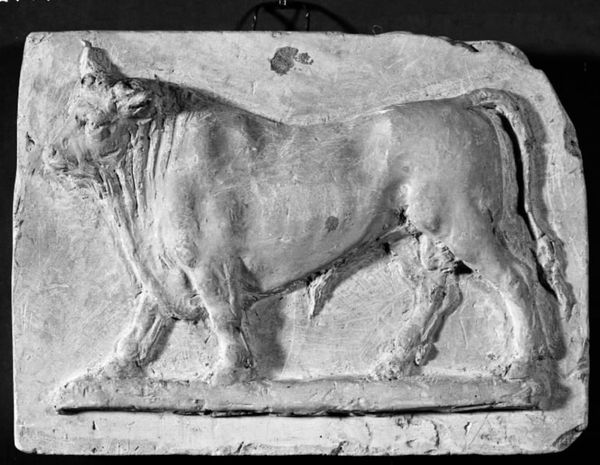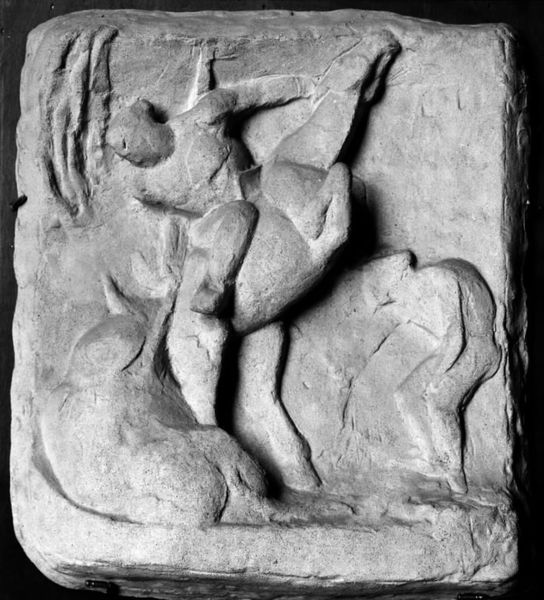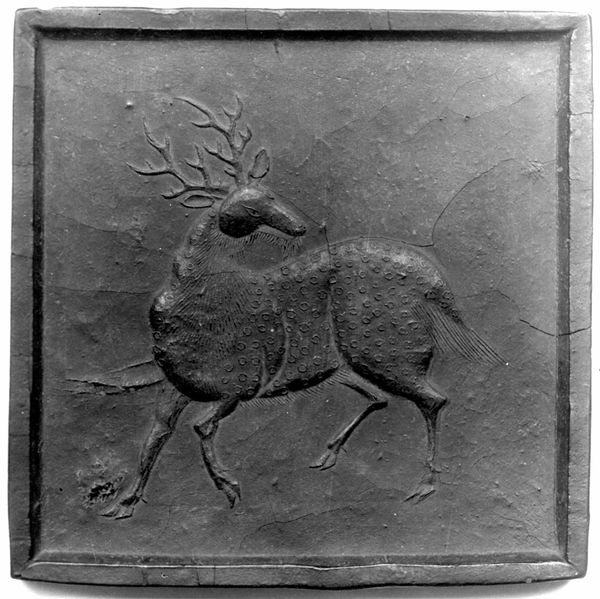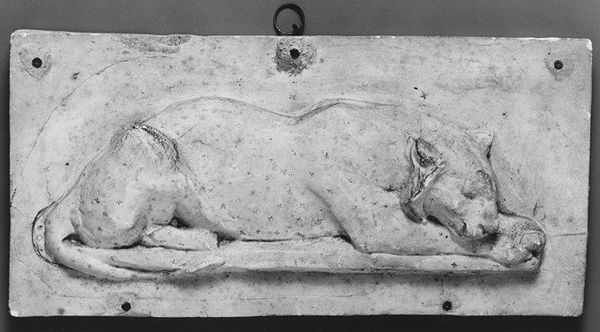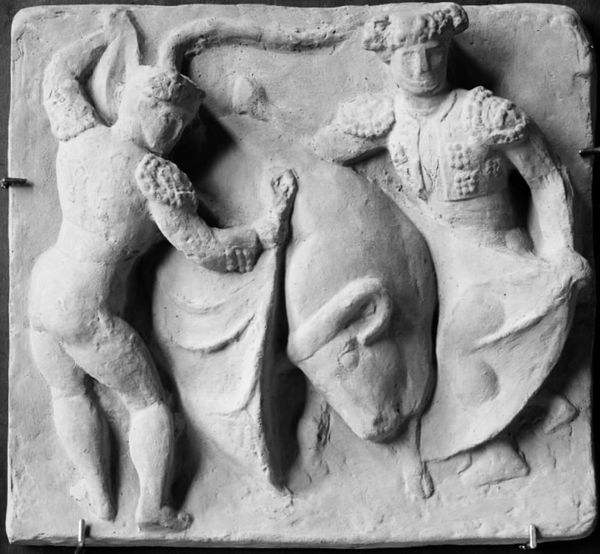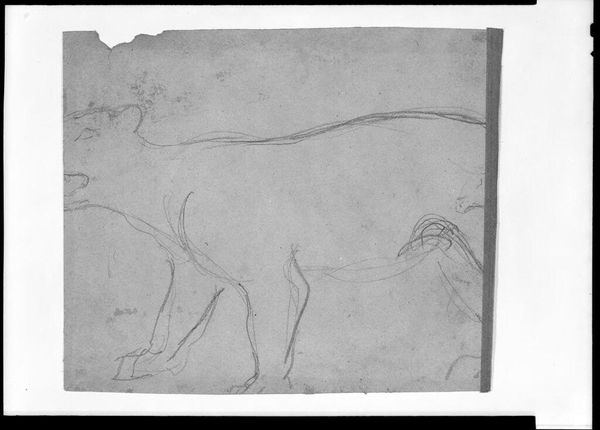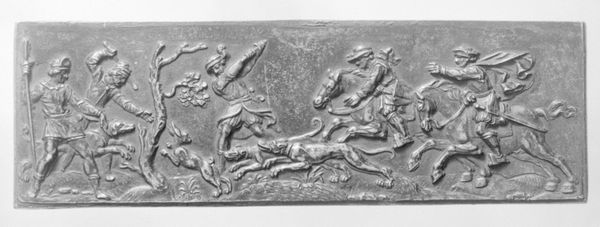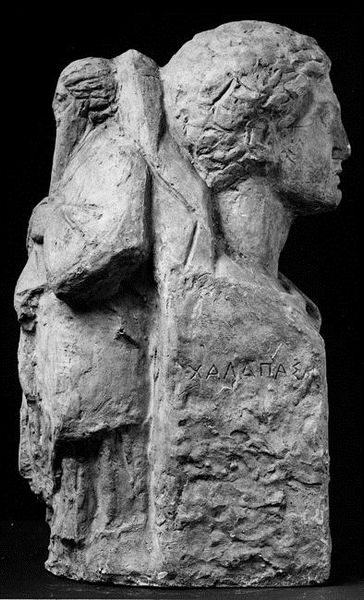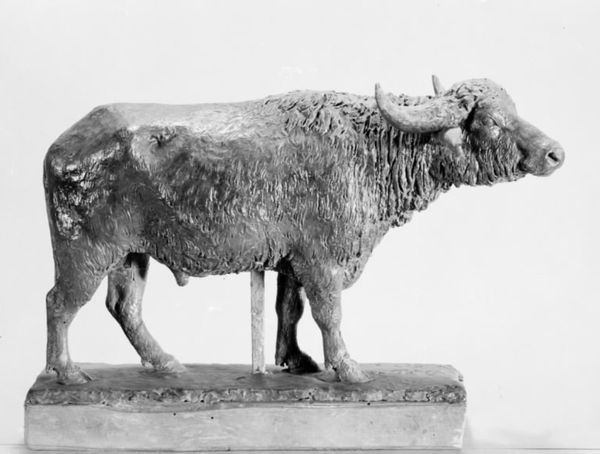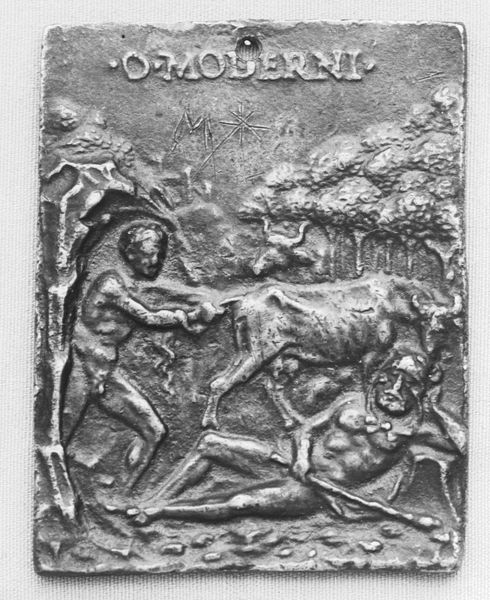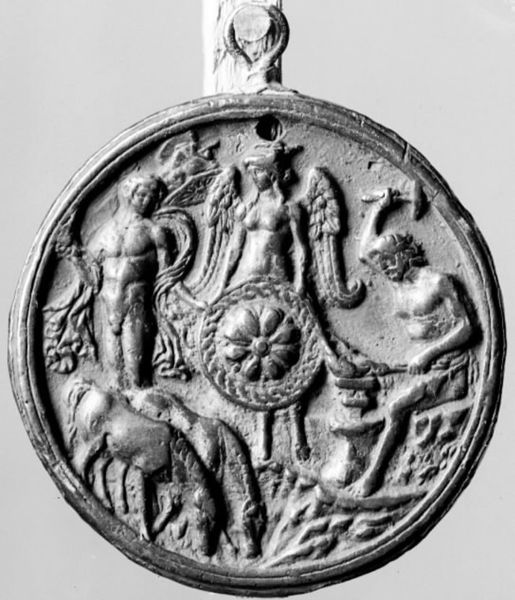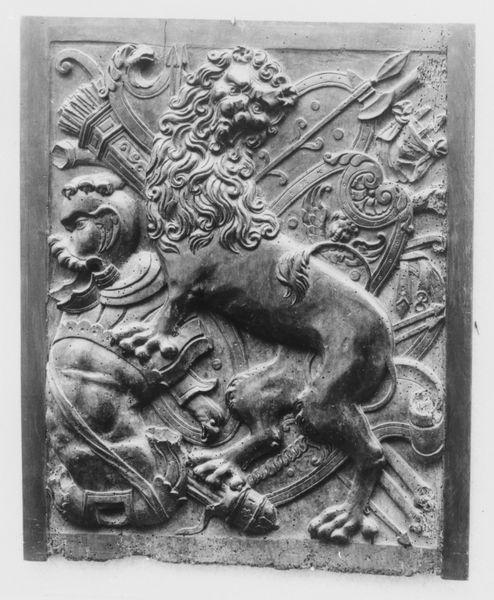
relief, bronze, sculpture
#
animal
#
sculpture
#
relief
#
bronze
#
mannerism
#
sculpture
Dimensions: 6 cm (height) x 7.9 cm (width) x 0.4 cm (depth) (Netto)
Curator: This relief, titled "Okse," depicting an ox, was created by Antonio Abondio sometime between 1553 and 1591. It’s a bronze piece, currently held at the SMK, the National Gallery of Denmark. What strikes you initially about it? Editor: The sheer massiveness. Even in this flattened, relief form, there’s an incredible sense of the animal's bulk and power. And a somber kind of gravitas, I’d say. Curator: Indeed. Abondio worked in the Mannerist style, and while it isn’t as overtly dramatic as some Mannerist works, you see that characteristic elongation in the ox’s body, and an almost artificial smoothness to its musculature. It's designed to impress, perhaps to reflect the patron’s own power and dominion over nature. Editor: It feels almost totemic. Throughout history, the bull and the ox are loaded with symbolism: virility, strength, sacrifice. Think of the Minotaur, or even the Golden Calf. Is Abondio tapping into those primal associations? Curator: Almost certainly. In the 16th century, there was growing interest among wealthy patrons in collecting animal bronzes; it was partly an embrace of antiquity, where animal representations had rich religious and mythological significance. Displaying such an image signaled wealth, taste, and perhaps an association with the virtues ascribed to the animal itself: strength, agricultural bounty, et cetera. Editor: The surface has this wonderfully patinated look – signs of age and wear, almost as if it were unearthed, discovered. This texture is just as communicative as the ox figure itself, telling us about time and place and cultural value that transformed over generations. Curator: The surface certainly speaks of its long life, enduring various aesthetic and political climates. It also serves as a testament to how certain symbols, like that of the ox, are malleable enough to be continually reinterpreted and remain meaningful across eras. Editor: This artwork really demonstrates the strength and persistence of ancient symbolic languages. An animal frozen in bronze continues to stir our associations today. Curator: Absolutely, reminding us that artistic patronage often involved much more than simple decoration; it was deeply interwoven with expressing status, beliefs, and political ambitions.
Comments
No comments
Be the first to comment and join the conversation on the ultimate creative platform.
